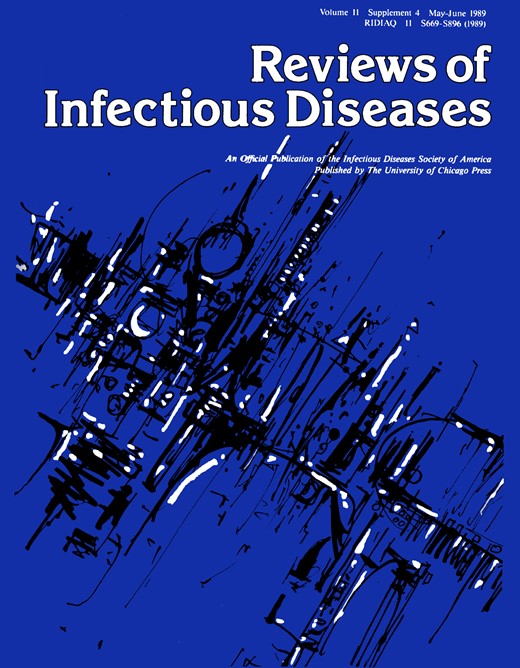-
Views
-
Cite
Cite
R. Swanepoel, D. E. Gill, A. J. Shepherd, P. A. Leman, J. H. Mynhardt, S. Harvey, The Clinical Pathology of Crimean-Congo Hemorrhagic Fever, Reviews of Infectious Diseases, Volume 11, Issue Supplement_4, May-June 1989, Pages S794–S800, https://doi.org/10.1093/clinids/11.Supplement_4.S794
Close - Share Icon Share
Abstract
Observations were made of 15 fatal and 35 nonfatal Crimean-Congo hemorrhagic fever (CCHF) infections diagnosed from February 1981 to March 1987 in Kimberly and Sandringham, Republic of South Africa. Following an incubation period of 2–9 days after exposure to infection, patients had a sudden onset of disease with fever, nausea, severe headache, and myalgia. Petechial rash and hemorrhagic signs such as epistaxis, hematemesis, and melena supervened on days 3–6 of illness. Deaths occurred on days 5–14 of illness. Patients with fatal infections had thrombocytopenia and markedly elevated levels of serum aspartate and alanine aminotransaminases, γ-glutamyltransferase, lactic dehydrogenase, creatine kinase, bilirubin, creatinine, and urea. Total protein, albumin, fibrinogen, and hemoglobin levels were depressed. Values for prothrombin ratio, activated partial thromboplastin time, thrombin time, and fibrin degradation products were grossly elevated, findings that indicate the occurrence of disseminated intravascular coagulopathy. Many of the clinical pathologic changes were evident at an early stage of the disease and had a highly predictive value for fatal outcome of infection. Changes were present but less marked in nonfatal infections.
- creatine kinase
- fibrinogen
- activated partial thromboplastin time measurement
- albumins
- bilirubin
- congo-crimean hemorrhagic fever
- creatinine
- disseminated intravascular coagulation
- epistaxis
- fever
- hematemesis
- headache
- alanine
- depressive disorders
- fatal outcome
- fibrin fibrinogen degradation products
- melena
- nausea
- oxidoreductase
- pathology, clinical
- south africa
- thrombin time
- thrombocytopenia
- infections
- prothrombin
- urea
- petechiae
- hemoglobin measurement
- myalgia
- aspartate
- depressed mood
- protein measurement, total
- incubation period







Comments